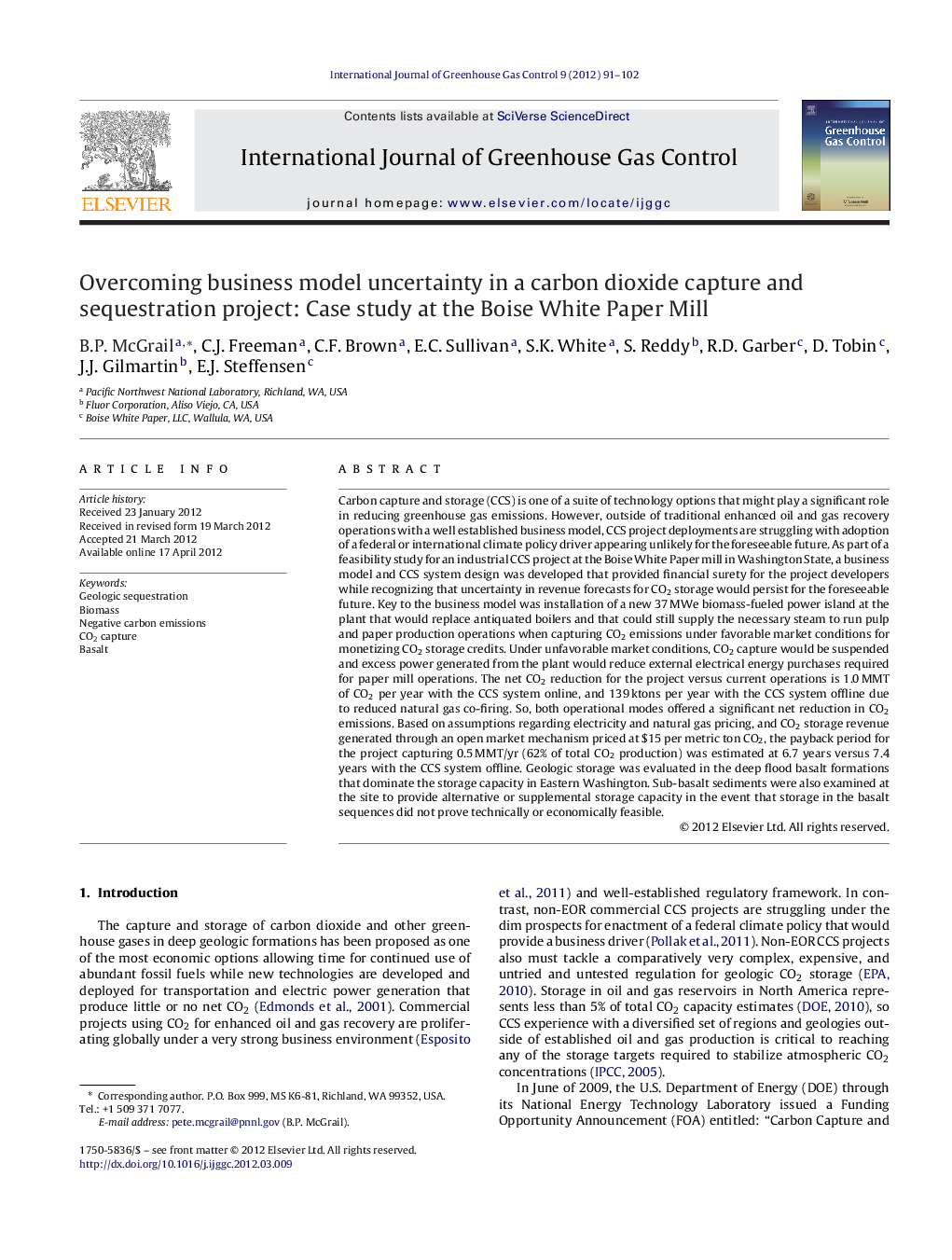| کد مقاله | کد نشریه | سال انتشار | مقاله انگلیسی | نسخه تمام متن |
|---|---|---|---|---|
| 1743411 | 1522014 | 2012 | 12 صفحه PDF | دانلود رایگان |

Carbon capture and storage (CCS) is one of a suite of technology options that might play a significant role in reducing greenhouse gas emissions. However, outside of traditional enhanced oil and gas recovery operations with a well established business model, CCS project deployments are struggling with adoption of a federal or international climate policy driver appearing unlikely for the foreseeable future. As part of a feasibility study for an industrial CCS project at the Boise White Paper mill in Washington State, a business model and CCS system design was developed that provided financial surety for the project developers while recognizing that uncertainty in revenue forecasts for CO2 storage would persist for the foreseeable future. Key to the business model was installation of a new 37 MWe biomass-fueled power island at the plant that would replace antiquated boilers and that could still supply the necessary steam to run pulp and paper production operations when capturing CO2 emissions under favorable market conditions for monetizing CO2 storage credits. Under unfavorable market conditions, CO2 capture would be suspended and excess power generated from the plant would reduce external electrical energy purchases required for paper mill operations. The net CO2 reduction for the project versus current operations is 1.0 MMT of CO2 per year with the CCS system online, and 139 ktons per year with the CCS system offline due to reduced natural gas co-firing. So, both operational modes offered a significant net reduction in CO2 emissions. Based on assumptions regarding electricity and natural gas pricing, and CO2 storage revenue generated through an open market mechanism priced at $15 per metric ton CO2, the payback period for the project capturing 0.5 MMT/yr (62% of total CO2 production) was estimated at 6.7 years versus 7.4 years with the CCS system offline. Geologic storage was evaluated in the deep flood basalt formations that dominate the storage capacity in Eastern Washington. Sub-basalt sediments were also examined at the site to provide alternative or supplemental storage capacity in the event that storage in the basalt sequences did not prove technically or economically feasible.
► Plant upgrades provided profitable operations with or without CO2 storage credits.
► Econamine system was integrated with CO2 sequestration and paper mill operations.
► Thermohydraulic analysis of CO2 flow in pipeline and wellbore was used for design.
► Reservoir simulations were performed with multiphase flow code STOMP-CO2.
► 0.8 MMT/yr of CO2 could be injected into one well in basalt or sub-basalt sediments.
Journal: International Journal of Greenhouse Gas Control - Volume 9, July 2012, Pages 91–102